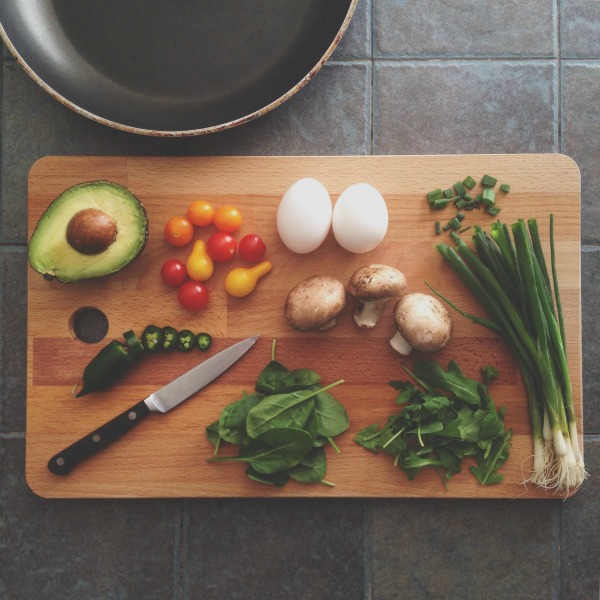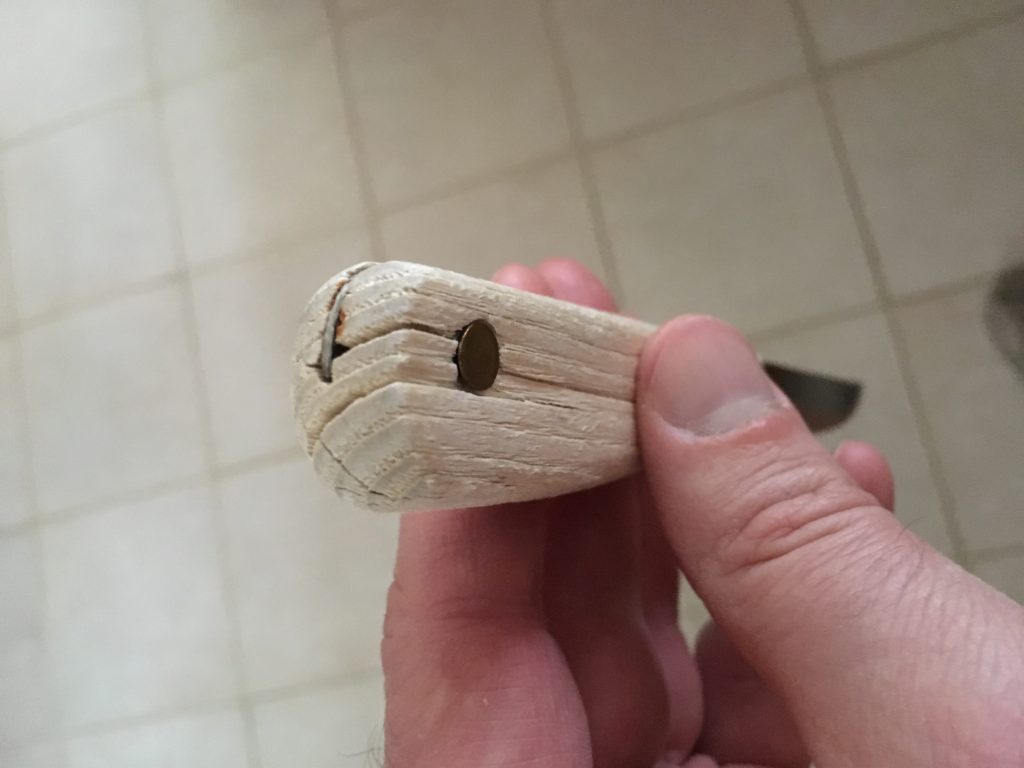Maintaining Your Wood Cutting Board and Knives

Wooden cutting boards and knives are my most used kitchen tools. Obviously, as for myself, we use all-natural wood and not polypropylene or polyethylene (plastics) cutting boards. I don’t buy organic food but I try to avoid products produced from natural gas, feedstocks derived from natural gas processing, and feedstocks derived from crude oil refining (i.e., plastics).
Wood or Plastic?
Wood because it’s the best choice for maintaining a knife edge and wood cutting boards and knives simply look nice. Most chefs will tell you that they find most plastic boards quite ugly, especially over time as they stain and get roughed up. Eventually plastic boards need to be discarded, whereas I’ve had some of my wooden cutting boards for over 30 years. Wood cutting boards and knives need about 5 minutes of love each month. There are many options for maintaining your wooden kitchen items, but I use a mixture of mineral oil and beeswax.
Process
Wooden cutting boards need to be kept clean and the best maintenance is washing with hot soapy water after using. Do not clean wooden kitchen items in your dishwasher. This will dry them out and cause cracking. Initially, the cracking may not be visible to the naked eye but rest assured it is there. You should never soak your boards or knives in water. You run the risk of cracking because the moisture content of the wood is increasing quickly while uner water and then decreasing quickly as it is removed. To sterilize your wooden kitchen items, you can use a very diluted bleach solution or hydrogen peroxide to clean their boards after they’ve been used for cutting raw meat as a precaution against bacterial contamination.
You should oil wood cutting boards and spoons to help maintain their surface and keep them from cracking. I try to do this monthly. You may need to do it more or less often. You have many choices to use for oil. Whatever oil you use must be food grade and not prone to rancidity. Mineral oil is an inexpensive and popular choice, and is readily available. The boards must be clean and dry before oiling. The oil should be rubbed on with a clean cloth or paper towel and allowed to soak in as long as possible. A good practice is to apply the oil in the evening after cleaning up from dinner, and then gently wipe off any excess oil on the surface the next morning. If the wood has an unpleasant odor, apply a small amount of beeswax or lemon oil to the oil.
You should oil wood cutting boards and spoons to help maintain their surface and keep them from cracking. I try to do this monthly. You may need to do it more or less often. You have many choices to use for oil. Whatever oil you use must be food grade and not prone to rancidity. Mineral oil is an inexpensive and popular choice, and is readily available. The boards must be clean and dry before oiling. The oil should be rubbed on with a clean cloth or paper towel and allowed to soak in as long as possible. A good practice is to apply the oil in the evening after cleaning up from dinner, and then gently wipe off any excess oil on the surface the next morning. If the wood has an unpleasant odor, apply a small amount of beeswax or lemon oil to the oil.
Theory
Wood is a hygroscopic material, which is just a fancy way of saying that it will gain and lose water depending on the ambient conditions. Wood is also an anisotropic material, which again is a fancy way of saying its properties, in this case shrinkage and swelling, are different in the different directions (width, thickness, and length). Changes in wood moisture content between 0-30 percent will result in either shrinkage or swelling. Changes above 30 percent will not affect the dimensional properties of wood. Wood will swell or crack as a result of rapid changes in moisture content. Food grade oil will coat the surface. The purpose of the oil is to penetrate the wood and saturate the wood fibers to stop any other liquids (water, blood, etc.) from soaking into the board. A well-oiled cutting board

or knife will keep the same shape when the wood fibers are saturated, so it will not expand and shrink and therefore will not crack or warp.
To read more please visit our publication: Fractionation of heavy metals in liquefied chromated copper arsenate (CCA)-treated wood sludge using a modified BCR-sequential extraction procedure.
Meet the Author
Dr. Todd Shupe is the President of Wood Science Consulting, LLC. He is a well-recognized expert on wood forensics, wood preservation, wood decay and degradation, and wood species identification. He has a broad background in new product development, quality management, and marketing and sales in both the public and private sectors. For more information please visit DrToddShupe.com.
We welcome your comments below.
Thank you for visiting. We trust that you have enjoyed reading our articles.
Liked this post? Read more below or search for more topics . . .

